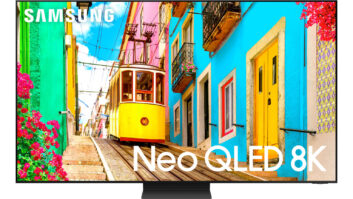El Segundo, Calif. – U.S. consumers planning to purchase
televisions this year have plunged to record low levels as Americans continue
to worry about the volatile economy, according to a new study from IHS iSuppli.
The
“U.S. TV Consumer Preference Analysis” report lists the results of
a survey conducted during the second quarter of 2011 showing that only 13
percent of U.S. consumers who had not purchased a TV during the past quarter
are planning to buy a new set during the next three to 12 months, down sharply
from 32 percent in the first quarter.
Some 83 percent of respondents said they had no intention of
buying a new TV set within the next 12 months. This compares with the 66
percent of respondents who said the same during the first quarter, marking the
highest negative level of response to the question since the studies were first
made public in 2010, IHS said.
The remaining 4 percent in the study represented those who had
received televisions as a gift, up from 2 percent in the first quarter.
“The latest survey indicates a tremendous shift in preferences
among an increasingly cautious buying public, unnerved by the continuing gloom
of the economy,” said Riddhi Patel, television systems and retail services
director at IHS. “The findings suggest a growing willingness among U.S.
consumers to suspend — if not totally abandon — their ongoing love affair
with the television, the primary entertainment device for many American
households. A sort of wait-and-see attitude has taken hold — whether it is
waiting for the economy to improve, or for television prices to fall some more,
or for the arrival of better deals that combine both reduced prices and
high-end TV features.”
Among consumers who bought TVs in the second quarter, the most
important criteria were picture quality, price and screen size, IHS said.
Brand name has become a less important factor in the purchasing
decision because of the diminishing price differential between different makes,
IHS said.
More troubling, the study showed higher-end features, such as connected
TV systems and LED backlighting, were also not seen as critical decision
factors in the purchase.
Still, IHS said, LED-backlit TVs accounted for nearly 30 percent
of TV purchases in the second quarter, up from 26 percent in the first.
Overall, televisions featuring LCD technology represented 86
percent of flat-panel TV sales in the second quarter.
Plasma displays accounted for the remaining market, although
plasma sets experienced an increase in overall average pricing as well as
favorability ratings, due to new models offering larger sizes and advanced
features.
A slight increase was detected in buyers going for
50-inch-and-larger sets, but IHS said the number of people who purchased
under-30-inch sets increased a surprisingly high 38 percent, mainly for reasons
of price as retailers offered fewer and smaller discounts in the bigger sizes.
As for so-called Smart TVs with Internet apps, the use of Netflix
among households soared to 66 percent for new TVs connected to the Internet,
and together with Facebook, YouTube and games represented the most-accessed
applications by consumers.
IHS said its recent survey was conducted among more than 45,000
randomly polled U.S. households from a continually refreshed pool of 2 million,
with a margin of error at 1.6 percent.
Further information is available in the
at
.













